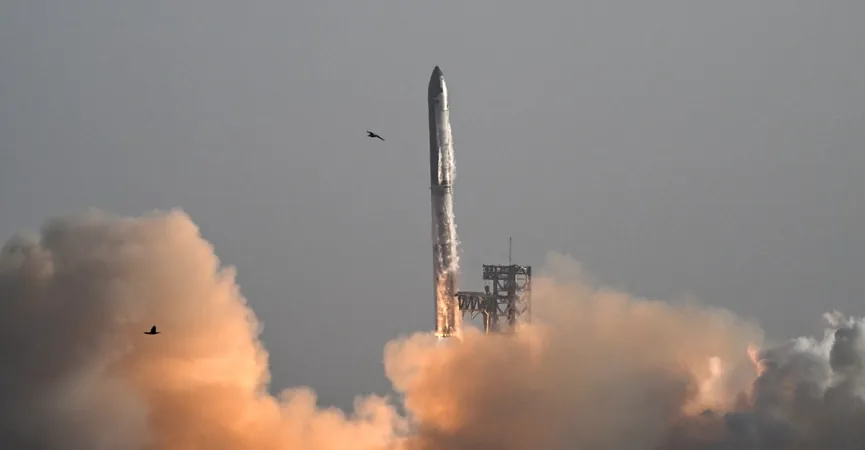
Are SpaceX Rockets on the Verge of Total Collapse?
2025-05-31
Author: Ying
Another week, another explosion for SpaceX’s Starship. This ambitious heavy rocket repeatedly faces fiery failures, leading many to wonder if the company’s luck has finally run out.
However, according to Wendy Whitman Cobb, a space policy expert, such failures are common during the development of new technologies, particularly as complex as large rockets. Unlike NASA or traditional aerospace giants like United Launch Alliance (ULA), who proceed at a slow and steady pace, SpaceX embraces a rapid iteration process. Whitman Cobb notes, "This is not the typical way that we have historically tested rockets." While traditional agencies ensure readiness before launch, SpaceX's more aggressive testing strategies result in frequent and dramatic failures.
Yet, these setbacks serve a purpose. The relentless testing model has fueled impressive advancements, such as the reusable Falcon 9 rocket. Still, this swift pace has drawn scrutiny, especially regarding environmental concerns and regulatory clashes.
The Starship’s journey has been particularly tumultuous. Unlike Falcon 9’s gradual improvements from failures to successes, Starship's development has been chaotic, taking on multiple complicated aspects simultaneously. Whitman Cobb emphasizes, "They are trying to do everything at once with Starship," presenting an engineering challenge on a grand scale.
A crucial component of this rocket is its Raptor engines. With 33 clustered together, these engines face the daunting task of reigniting in space—a feat that has succeeded in some tests but has also led to explosive failures.
But why the urgency? SpaceX CEO Elon Musk is on a relentless quest to reach Mars. While existing rockets could technically manage a mission, the immense logistics require a heavy-lift vehicle like Starship. This need is exacerbated by NASA’s hiccups in their own heavy rocket, the Space Launch System (SLS), which may soon face funding cuts, leaving SpaceX as the key player for future Mars missions.
Despite the ambition, there is still a monumental amount of work required before the Starship can realistically transport crew to Mars. Whitman Cobb warns against over-optimism—Musk's goal of launching a test mission by 2026, with crewed flights as early as 2028, seems "completely delusional" given the lack of preparation.
As for sending humans aboard? "There’s no way that they’re putting people on that right now," she asserts. However, she remains hopeful that SpaceX will ultimately overcome these hurdles, believing in the company's engineering capabilities.
Yet, dreams of establishing a thriving human settlement on Mars? That remains a distant fantasy—"decades away," according to Whitman Cobb. Whether we'll ever see a permanent Martian habitat in our lifetime is an open question.



 Brasil (PT)
Brasil (PT)
 Canada (EN)
Canada (EN)
 Chile (ES)
Chile (ES)
 Česko (CS)
Česko (CS)
 대한민국 (KO)
대한민국 (KO)
 España (ES)
España (ES)
 France (FR)
France (FR)
 Hong Kong (EN)
Hong Kong (EN)
 Italia (IT)
Italia (IT)
 日本 (JA)
日本 (JA)
 Magyarország (HU)
Magyarország (HU)
 Norge (NO)
Norge (NO)
 Polska (PL)
Polska (PL)
 Schweiz (DE)
Schweiz (DE)
 Singapore (EN)
Singapore (EN)
 Sverige (SV)
Sverige (SV)
 Suomi (FI)
Suomi (FI)
 Türkiye (TR)
Türkiye (TR)
 الإمارات العربية المتحدة (AR)
الإمارات العربية المتحدة (AR)